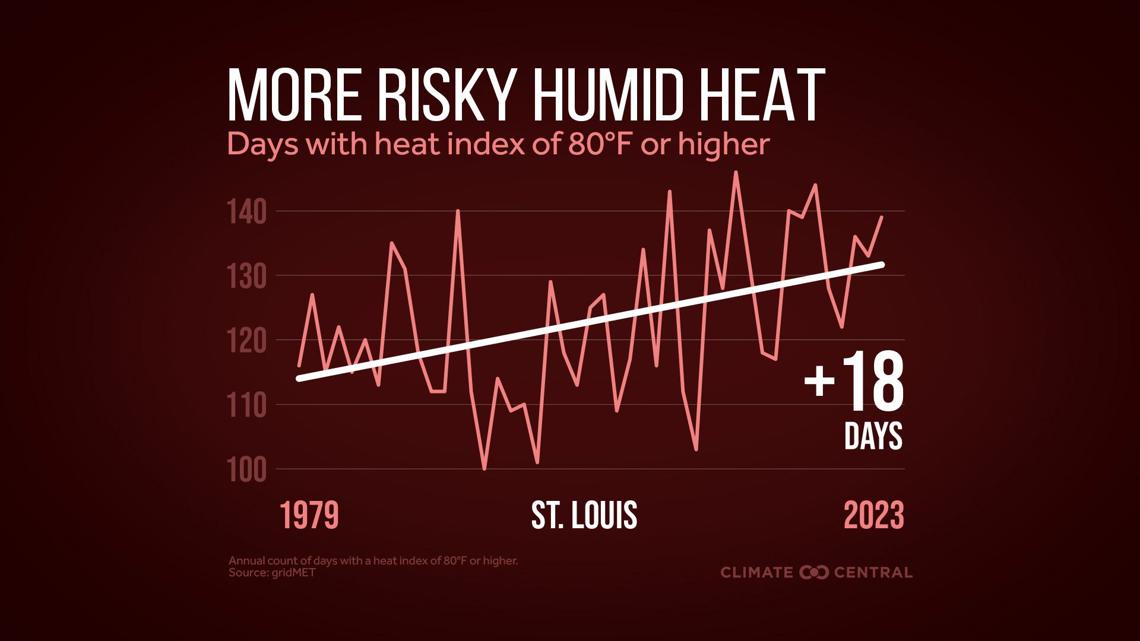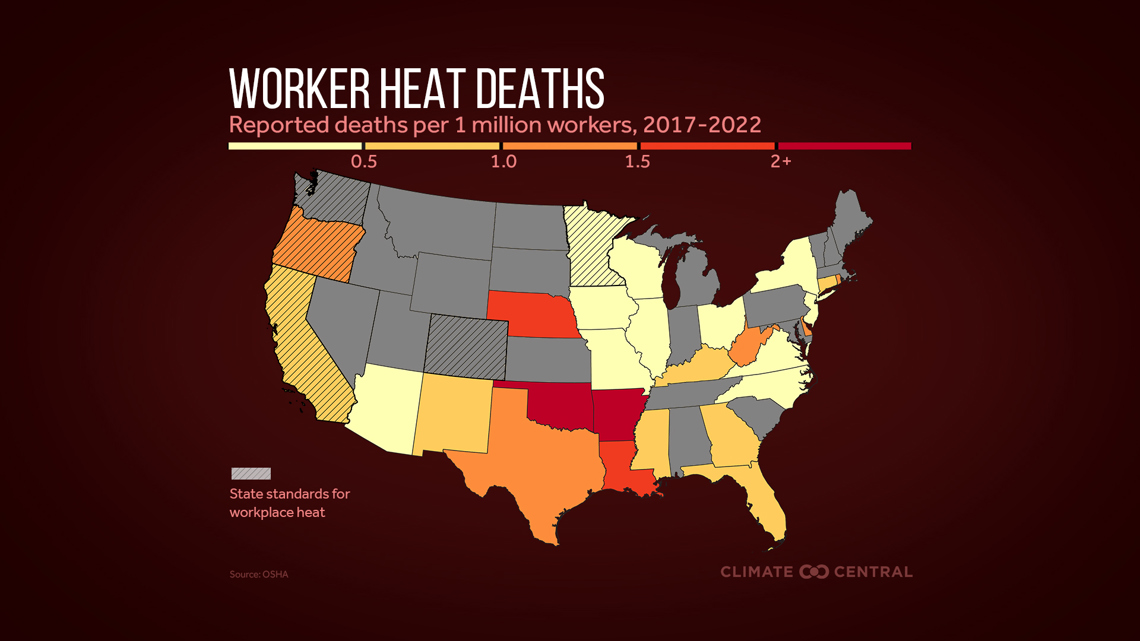ST. LOUIS — Before the peak heat of the day, Mike Krafft and Dave Haring got out of their truck at a client's yard. It wasn't horribly hot yet, but Krafft and Haring were already sweating.
"I probably go through two gallons of water on a day like this, maybe three," smiles Krafft, manager for Sundown Landscape Contracting.
Krafft, Haring and their 17 employees have no choice but to work outside.
"It's always a loss of production in the summertime," said Haring, president of Sundown Landscape Contracting, "just because it's hot, you're not moving as fast. You're taking more breaks, so we lose some time on that end and that's perfectly OK."
Haring said the hours in the summer are shaved back to avoid the late afternoon hours. Crews at Sundown Landscape Contracting work from 7 a.m. to 2 p.m., instead of the usual 7 a.m. to 5 p.m.
There are no specific parameters governing how employers handle workers in the heat, but there is a broad protection mandate from the Occupational Safety and Health Administration.
"Heat is a recognized hazard by OSHA and many organizations," OSHA St. Louis Area Director William McDonald explained. "The general duty clause in the OSHA act itself tells every employer must provide a safe and healthy workplace. So in that is how we would enforce that particular component."
Businesses can be fined for endangering workers in the heat. McDonald explained, "The goal of OSHA is to eliminate fatalities, injuries, and illnesses, the only way that we can legally is through the issuance of a citation."
Discrimination laws protect employees from possible retaliation. McDonald said what's hard about reporting is that most employees who suffer from a heat-related illness or heat-related death on the job are new: "Workers need to be acclimatized to the environment, because what we do know is that three out of every four workers that do die is in their first week of work."
OSHA recommends employers follow the 20% rule for new employees:
- One the first day, work no more than 20% of the shift's duration at full intensity in the heat
- Increase the duration of time at full intensity by no more than 20% a day until workers are used to working in the heat
OSHA, in partnership with the National Institute for Occupational Safety and Health, has a free heat safety tool app. OSHA also has resources for employers and workers on their website.
McDonald said to remember three key takeaways: "Water, rest and shade." Three things that will keep people healthy when temperatures surge.
Speaking of surging temperatures, the meteorologists at Climate Central expect extreme heat to be a problem for years to come. Climate Central is a policy-neutral 501(c)(3) nonprofit.
"We are in it for the data," Weather and Climate Engagement Specialist Meteorologist Shel Winkley said. "We take weather and climate data and we put it into a perspective that everybody can understand."


Referencing the chart above, Winkley explained, "On average, St. Louis experiences about 18 more days a year, so that puts you in about 130 days in the year where our weather-exposed workers are feeling the impacts of a warming climate."


The Climate Central map above highlights Missouri and Illinois as areas where heat-related work deaths have occurred. In 2022, OSHA investigated 57 heat-related fatalities/catastrophes nationwide. In 2023, the administration investigated 49 heat-related fatalities/catastrophes. This year, through July 14, OSHA has investigated 34 fatalities/catastrophes. The nationwide OSHA totals are recorded during their fiscal year, which runs from Oct. 1 to Sept. 30.
In April of this year, OSHA drafted new heat safety rules that could impact workers. New rules will not be finalized until more input is received from the public.
Federal regulations could add to the loss of labor caused by extreme heat. Climate Central tracked and projected annual labor hours lost per worker due to heat using data from a 2021 study. The findings are laid out in the video below.
Missouri and Illinois are noticeably highlighted in the Climate Central maps. Winkley explained why heat domes and their persistence are to blame: "That's an influx of that moisture, so this is where weather and climate come together. You've always had heat. You've always had humidity in the summertime, but we're seeing an increase in that heat and humidity, and we're seeing an increase in the frequency and the duration of that heat and humidity."
According to the U.S. Bureau of Labor Statistics, over 30% of all workers are outside for a part of their job.


